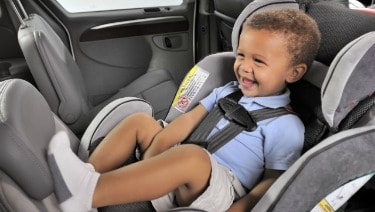Many parents may think they are providing a safe environment for their children while in the car, but a great number of families do not comply with safety recommendations in their personal vehicles.
Myth: Following the instructions on the car seat installation manual guarantees a safe, secure installation.
Fact: Many diligent parents follow the instruction manual to a T, and still can’t seem to get a proper fit for their car seat. That is partly because every car seat and every car is different, and not all car seats are an easy match for all vehicles. It’s also because many people have a difficult time figuring out the “top tether” of the car seat. After you’ve installed your car seat, take it to your local fire department so that they can check it for you.
Myth: Hand-me-down car seats are just as safe as newly bought car seats.
Fact: Used car seats carry a variety of problems with them from past owners. First, check the expiration date to make sure the car seat has not passed it. Second, ask the previous owner if the car has been in a crash. An accident can make a car seat less stable in the future. Third, a very old car seat can have degradation in the plastic, which weakens it considerably. If you do use a hand-me-down car seat, be sure to call the manufacturer and put yourself on the mailing list for product recalls.
Myth: Once your child expresses annoyance with his rear-facing seat, it’s best to face the car seat forwards.
Fact: Until your child is at least a year old and weighs 20 lbs. or more, it is recommended by safety experts that you maintain the seat in the rear-facing position. Many pediatricians advise parents to keep their kids rear-facing for longer than that, since a 2007 study showed that children between 12 and 23 months of age are 5.32 times more likely to suffer severe injury in a car accident in a forward-facing seat, versus a rear-facing seat.
Myth: Booster seats are unnecessary.
Fact: Only 20% of kids between the ages of 4 and 8 ride in booster seats in their family’s vehicle. Clearly, the myth that the booster seat is not necessary is a rampant one. The booster seat plays an important role in your child’s safety. Consider where the seatbelt falls across the front of your child’s body when fastened. If it lays across her neck, it is not doing its job of protecting her. The booster seat elevates children so that the seatbelt falls across their chests, providing them with a secure hold.
Reading about car seat safety guidelines at every step of your child’s physical development is imperative, as the secure installation of a proper and developmentally appropriate car seat has the potential to save your child’s life.

